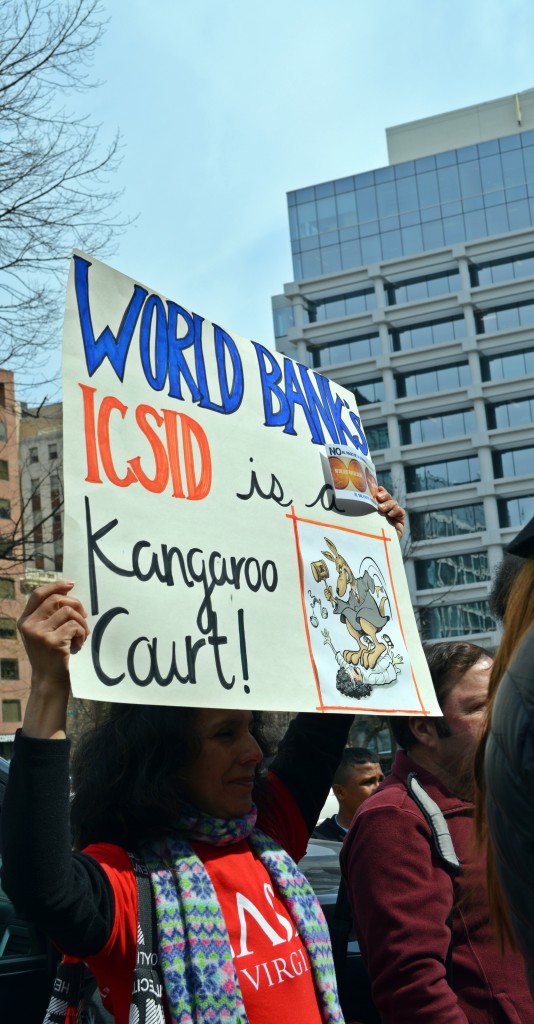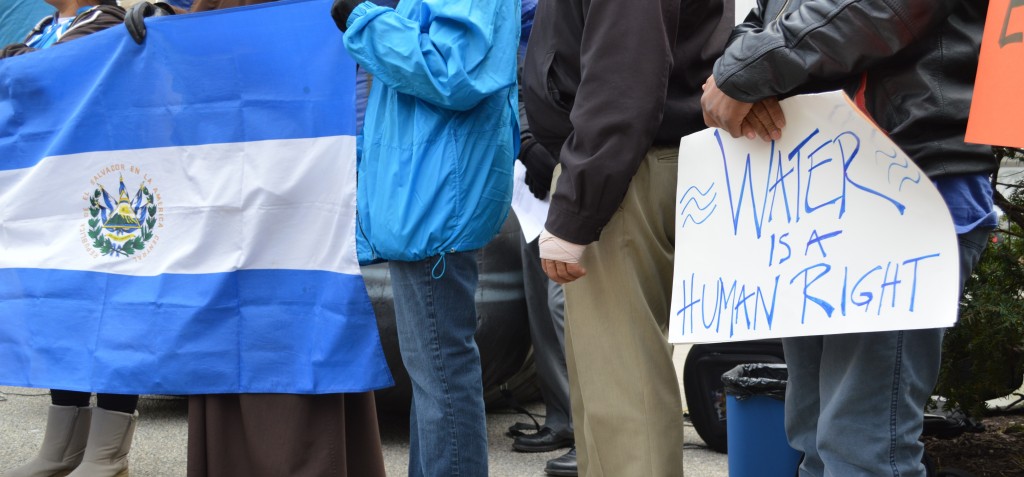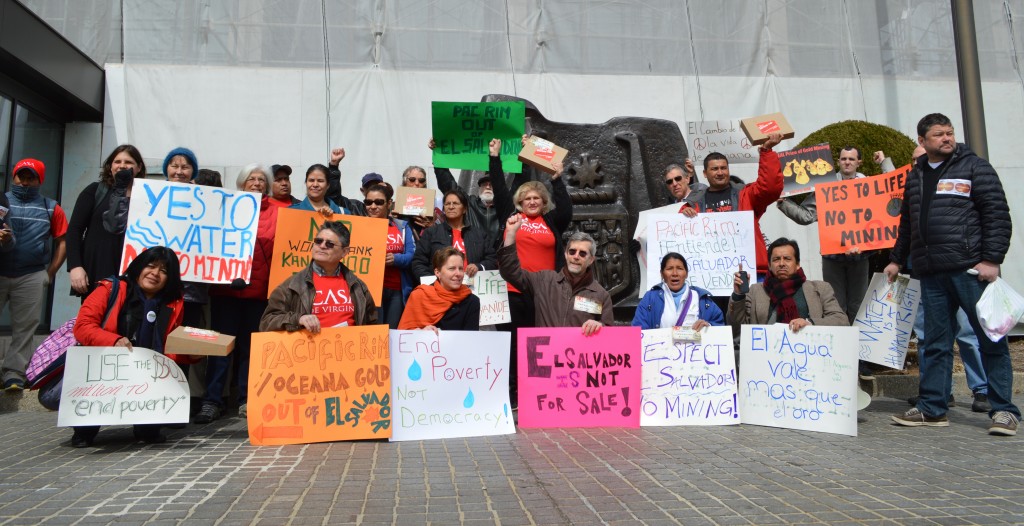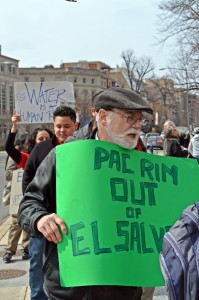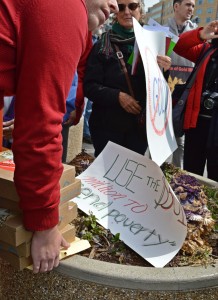
The Australian Embassy is about 8 blocks of traffic, restaurants, and business offices northwest of the World Bank’s headquarters in Washington, DC– I know this because yesterday I walked the distance alongside a group of energized human rights activists. “El Salvador says no to a Kangaroo Court!”
To us, the connection between the lunchtime rally outside the World Bank and the subsequent demonstration outside the Australian embassy seemed perfectly logical, but it’s understandable why curious onlookers might question exactly how the two relate. Let’s break it down:
1. Protesters gathered in a rally outside the World Bank at 12pm Thursday, March 19 in demonstration of their opposition to the Bank’s International Center for Settlement of Investment Disputes (ICSID), a tribunal-mechanism inside the Bank preparing to rule on a lawsuit filed by the Pacific Rim/Oceana Gold. Pacific Rim is a Canadian subsidiary of the Australian Oceana Gold mining company, who is suing El Salvador hundreds of millions of dollars for their national laws that protect essential river systems from gold mining’s heavily toxic cyanide pollution. The tribunal’s proceedings are kept secret from the public, and El Salvador has no say in the court’s determination. Demonstrators included speakers and activists from the Salvadoran National Roundtable Against Mining, CASA, the Sierra Club, Oxfam America, and others.
2. At the rally’s peak, a World Bank representative came outside to receive the 174,354-name petition asking Oceana Gold to drop the lawsuit against El Salvador.
3.After much enthused chanting and many colorful signs, the rally concluded around 1pm, at which time a small group of representatives from each of the fundamental organizations walked in a modest march from the World Bank’s headquarters to the Australian Embassy. We carried our signs at our sides, and there was pleasant chatter in place of chants. Among us, we also carried 5 cardboard containing a copy of the petition we had just presented to the Bank; this copy would be for the folk at the Australian Embassy, so that they understood the concerns the Salvadoran people had pertaining to their company’s unethical actions against communities in El Salvador.
4. We were not all allowed inside the Australian Embassy, so we sent one representative to explain that the group had a petition it would like to present to an Embassy official. The security guard requested that the representative rejoin the party outside, also asking that the group remain off of the steps so that “other guests can enter.” We complied. Our small group had grown again, as many activists met the marchers at the embassy. While we waited the 30 minutes or so for the Embassy to send out a representative, Lindolfo Carballo of CASA organized the activists into an impromptu circuit back and forth in front of the Embassy to ensure the group would not be cited for loitering charges by the police that had recently arrived on the scene.
5. We gathered the boxes containing the documents in a neat pile on top of one of the Embassy’s giant stone flower pots. In a move that went largely unnoticed by the distracted demonstrators, a man emerged from the Embassy, picked up the boxes and quickly and immediately returned inside. He did not engage with the activists, and his few intelligible words sounded something like, “No. No more pictures.”
There you have it: full-circle from the giant inflatable cat outside the World Bank to the angry security guard at the Australian Embassy. Talk about “Kangaroo Courts!”
Originally posted on April 2, 2015.

